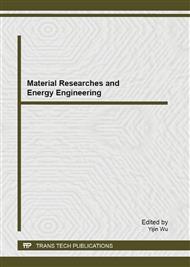p.136
p.140
p.144
p.149
p.156
p.161
p.167
p.173
p.178
Study on the Anti-Static Desulphurization Gypsum Fiberboard
Abstract:
The fiber of the agriculture and forestry biomass resources and the processing residues is main raw materials as a reinforcing material, the calcinated calcium sulfate hemihydrates by industrial flue gas desulfurization waste is a binder, adding efficient composite retarder to increase the initial setting time of gypsum and meet the production process requirements, adding conductive carbon black to reduce system resistance gypsum fiber to produce and meet the requirements of antistatic products. By semi-dry process, we produced the retardant, waterproof, environmental friendly and anti-static desulfurization gypsum fiberboard. Desulfurization gypsum antistatic fiberboard can meet the market demand for functional products used widely in antistatic floor, antistatic wall panel etc. The production of anti-static desulfhurization gypsum fiberboard expands the application range of desulfhurization gypsum, at the same time, which changes the structure of the forestry industry and has a positive effect on improving the forestry economic operation quality, efficiency and international competitiveness.
Info:
Periodical:
Pages:
156-160
Citation:
Online since:
September 2013
Authors:
Price:
Сopyright:
© 2013 Trans Tech Publications Ltd. All Rights Reserved
Share:
Citation:


